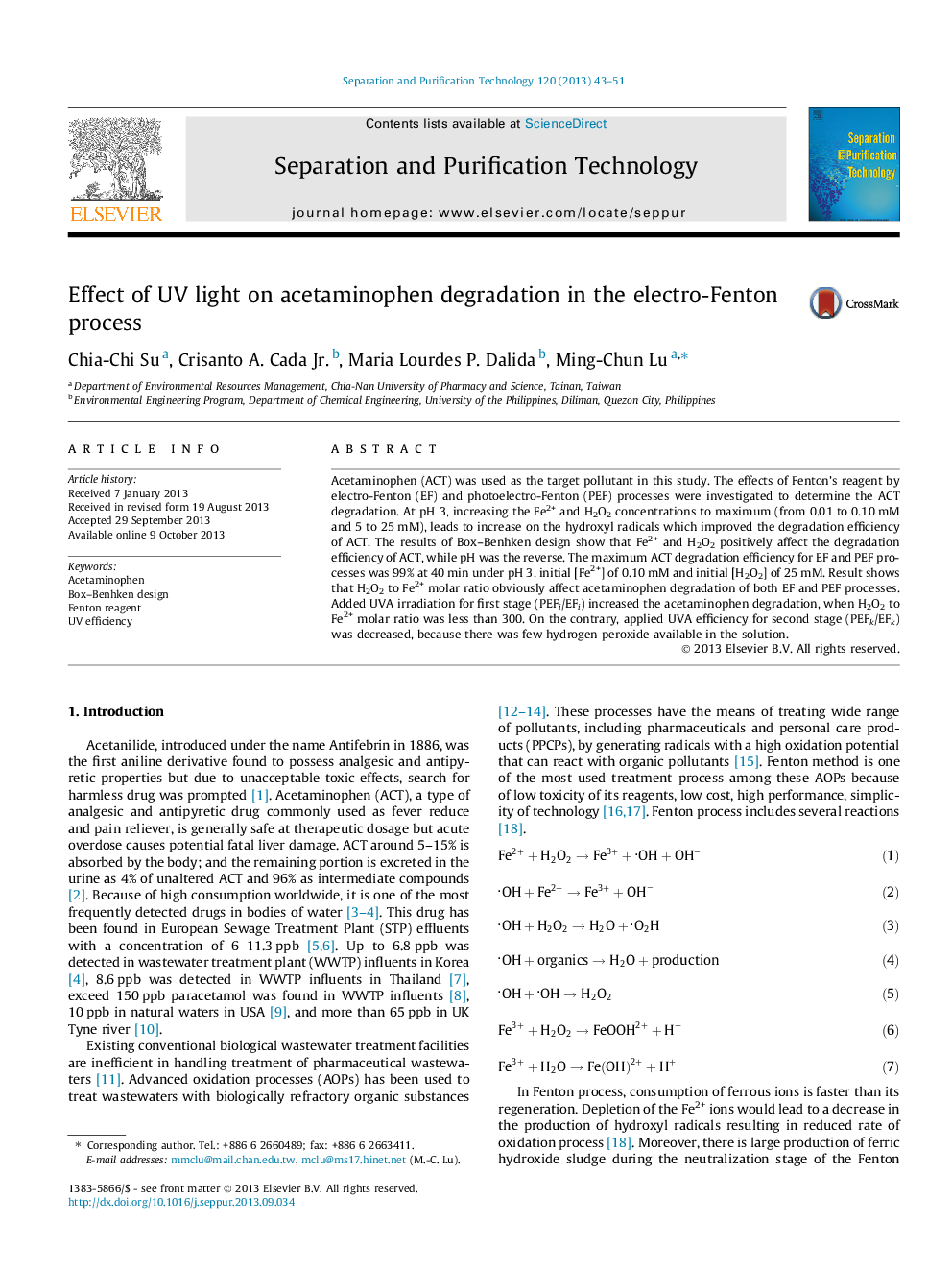| Article ID | Journal | Published Year | Pages | File Type |
|---|---|---|---|---|
| 641248 | Separation and Purification Technology | 2013 | 9 Pages |
•The effect of UV light on acetaminophen degradation was investigated.•Pseudo-first order degradation rate constant of acetaminophen was obtained.•Applying UV light for first stage increased the acetaminophen degradation.
Acetaminophen (ACT) was used as the target pollutant in this study. The effects of Fenton’s reagent by electro-Fenton (EF) and photoelectro-Fenton (PEF) processes were investigated to determine the ACT degradation. At pH 3, increasing the Fe2+ and H2O2 concentrations to maximum (from 0.01 to 0.10 mM and 5 to 25 mM), leads to increase on the hydroxyl radicals which improved the degradation efficiency of ACT. The results of Box–Benhken design show that Fe2+ and H2O2 positively affect the degradation efficiency of ACT, while pH was the reverse. The maximum ACT degradation efficiency for EF and PEF processes was 99% at 40 min under pH 3, initial [Fe2+] of 0.10 mM and initial [H2O2] of 25 mM. Result shows that H2O2 to Fe2+ molar ratio obviously affect acetaminophen degradation of both EF and PEF processes. Added UVA irradiation for first stage (PEFi/EFi) increased the acetaminophen degradation, when H2O2 to Fe2+ molar ratio was less than 300. On the contrary, applied UVA efficiency for second stage (PEFk/EFk) was decreased, because there was few hydrogen peroxide available in the solution.
